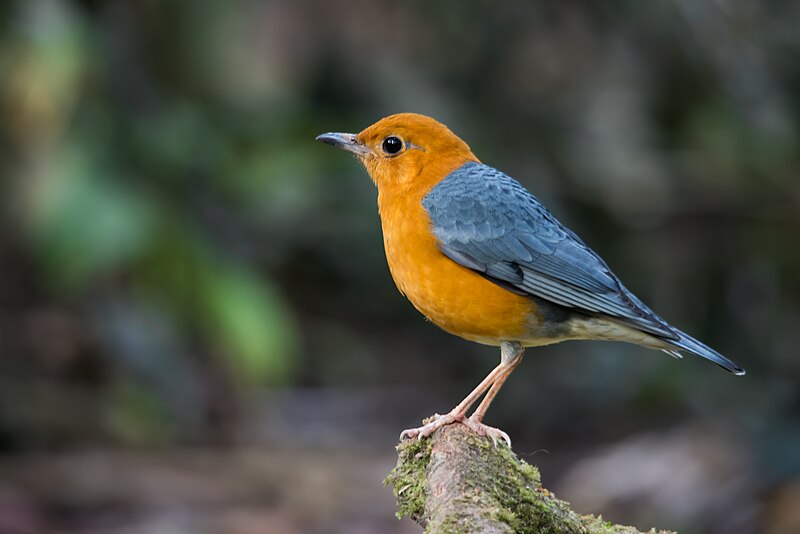The family Turdidae contains the true thrushes of the world, although there are birds in other families some of which are called thrushes. Turdidae derives from the Latin word turdus, meaning thrush. The familiar American Robin is Turdus migratorius, the wandering thrush. The 88 species of true thrushes, Genus Turdus, have a cosmopolitan distribution across the world. The well-known Eurasian or Common Blackbird and the Fieldfare are common thrushes, ranging across Europe and for the Fieldfare, across much of northern Asia as well (a Palearctic distribution.)

There are several other genera in the thrush family such as the Eastern Bluebird, Siala sialis, the White-tailed Ant Thrush, Neocossyphus poensis of central Africa, the Slate-colored Solitaire, Myadestes unicolor, of Mexico and Central America, and the Orange-headed Thrush, Geokichla citrina, of Thailand. There are around 180 species of birds in the Turdidae, found worldwide, except for Antarctica and parts of the Arctic, in a variety of habitats including forests, scrublands, wetlands, deserts, grasslands, fields, and suburban and urban areas. Thrushes are medium-sized birds, 4.5-13 inches long with slender bills, short, rounded or pointed wings, and medium-sized tails. Their lower legs are smooth rather than scaly, sometimes described as “booted.”

Turdidae species come in a variety of colors and patterns including brown, blue, gray, and black and often with patches of red, orange, white, or yellow.
Thrushes forage actively on the ground, in the soil, the leaf litter, and in vegetation, feeding mainly on invertebrates, but also on fruits and berries. Their typical feeding behavior is described as “stop – start – pounce”. They also toss leaves with the bill and a quick head flick. Experiments have shown that American Robins find worms both by sight and by sound – listening for them as they dig through the soil.
The song is usually melodious, involving rich phrases, clear notes and whistles. Males usually sing from exposed perch in spring and during the breeding season, at dawn and dusk.
Turdidae species are territorial and usually monogamous. The male performs courtship displays and courtship feeding is observed in several species. They may nest in tree-holes, rock crevices, cup or dome-shaped nests, on the ground and in burrows. The female usually chooses the nest site, builds the nest and does most of the incubation, but the male may feed her. Both parents feed the young.
At about 12 to 15 days of age, the young leave the nest and hide in the nearby vegetation, being fed by their parents, before they are fully feathered and ready to fly.

Robin red-breast is applied to both the American Robin and the Robin of Europe (taxonomically an old world flycatcher). The breasts of both are more orange than red, so why red-breast? How about the rusty-colored head of the Redhead duck and the rufous tail of the Red-tailed Hawk? And why do we call people with naturally colored orangish hair redheads? The reason is simple: there was no word for orange color in the English language until the 1600s when traders from India brought the fruit we know as oranges to Europe. Before that, every color from maroon to rust to rufous to coral was defined as some sort of red.
Robin orange-breast doesn’t sound quite right.
The last part is very interesting, the fact that the word “orange” didn’t exist in English until the 17th century.
I bet this can show the development of language over time.
My favorite thrush is the Varied Thrush (Ixoreus naevius) that migrate for winter here in Oregon.